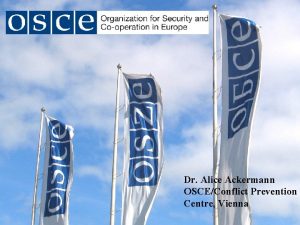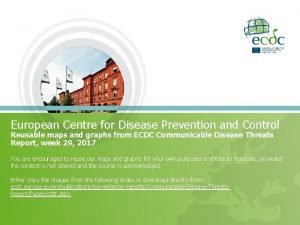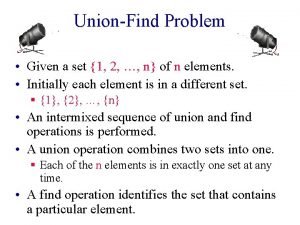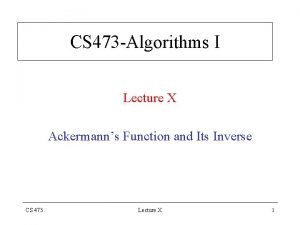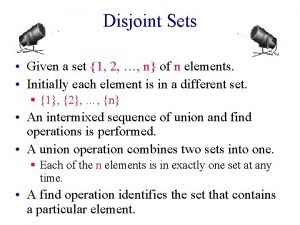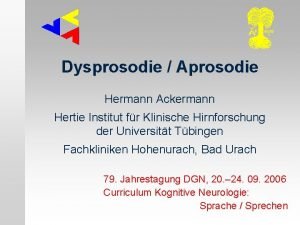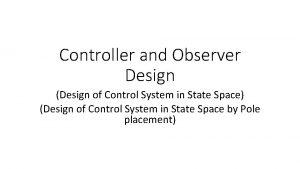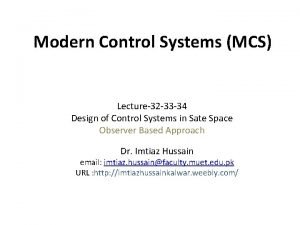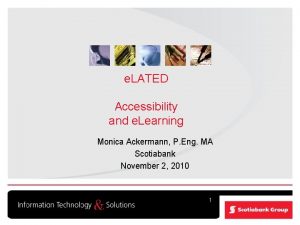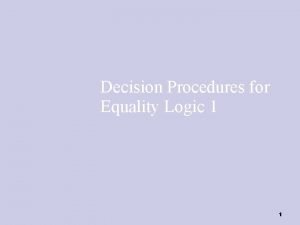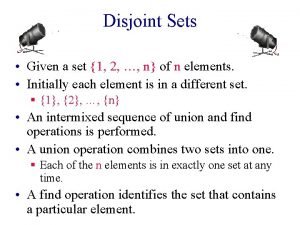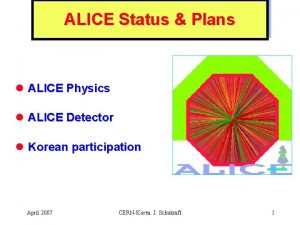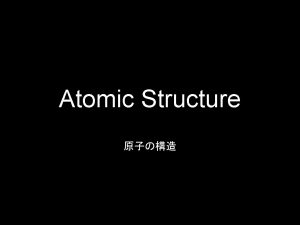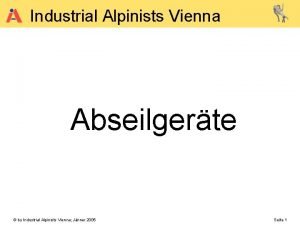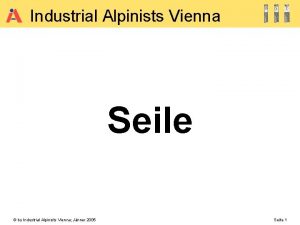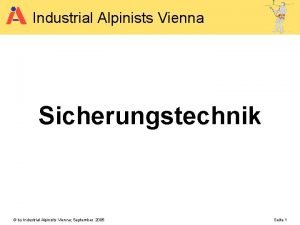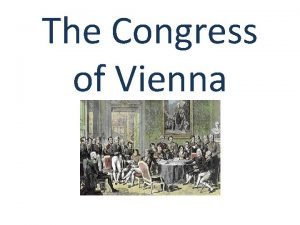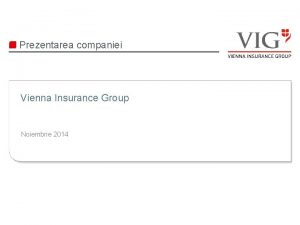Dr Alice Ackermann OSCEConflict Prevention Centre Vienna INTRODUCTORY















- Slides: 15

Dr. Alice Ackermann OSCE/Conflict Prevention Centre, Vienna

INTRODUCTORY COMMENTS

The OSCE is. . . o A regional security arrangement o broad membership - 56 participating States o norms and value-based organization o comprehensive and co-operative Security - three dimensions of security o political decisions, not legally binding o consensus - equal sovereign states o extensive field presence - 19 operations in 17 countries

56 participating States… …from Vancouver to Vladivostok 4

OSCE Field Activities Office in Minsk Project Co-ordinator RUS in Uzbekistan The Conflict in the Area FI SD mission NW roject Co-ordinator in Ukraine ES DK LI UK NL BL B F PL D L SK A I P TAD UZB BH TKM GEO E SER Zagreb Bosnia and Herzegovina Montenegro KGZ RO SL CR Georgia MO H Astan a KAZ UKR CZ CH Bishke k Dealt by the OSCE Minsk Conference LV IR Vienna Other OSCE Field ACTIVITIES MISSIONS IS BUL AZ AR MON ALB TUR Yereva n GRE Baku Ashgaba d Dushanbe Moldova Revised July 2006 Kosovo Albania Skopje Serbia The boundaries and names shown on this map do not imply official endorsement or acceptance by the OSCE

Major OSCE Focus o One of the major focus of the OSCE is: §early warning §conflict prevention §crisis management §post-conflict rehabilitation

• Addressing the conflict cycle Early warning Post-conflict rehabilitation Conflict prevention Crisis management

ADDRESSING A WIDE-RANGE OF POLITICAL AND SECURITYRELATED CONCERNS • • • • Arms Control Confidence-building Measures Human Rights National Minorities Democratization Rule of Law Civil Society Development Border Management and Security Anti-Trafficking Police Training Tolerance Building Counter-Terrorism Economic and Environmental Issues

Types of Crisis/Conflict Situations Addressed by OSCE • Political Crises • Protracted Conflicts • Crisis Situations in the context of postconflict reconstruction • Other security challenges (e. g. violent extremism; trafficking)

A Unique Toolbox for Crisis/Conflict Management o Long-standing history of crisis/conflict management activities o Structures and Mechanisms o Political Dialogue and Good Offices (Ci. O, Personal/Special Envoys, SG, D/CPC; Permanent Council) o Support for political negotiations o Institutions (e. g. HCNM; RFOM; ODIHR; OSCE Parliamentary Assembly) o Field Operations o Special body of “Existing OSCE Mechanisms and Procedures “ o Co-operation with other Actors

Co-operation with the European Union o OSCE-EU co-operation well- developed—”natural born partners” (Solana) o Almost half of OSCE participating States are EU members o EU covers more than 70% of OSCE’s core budget o OSCE and EU share well-established and extensive mechanisms for cooperation o HQ level-Staff meetings; o Ambassadorial and Ministerial EU-OSCE Troika meetings; o Field level: European Commission delegations; EU Special Representatives; co-operation on project level activities; o ENP: continues to provide opportunity to bring EU-OSCE closer together in a number of regions (Eastern Europe and Southern Caucasus)

The OSCE’s Perspective on ENP and its Crisis Management/Conflict Management Capabilities

ENP as Efficient Tool for Conflict Management from OSCE Perspective o In general, from OSCE perspective ENP functions as efficient tool for conflict/crisis management as well as conflict prevention o In particular, ENP seen as a much needed tool that complements existing OSCE efforts o Complementarities: o ENP is complementary to the OSCE’s broader efforts in addressing all three dimensions of security o ENP focus is similar to that of the OSCE: stability, promoting and supporting longterm reform processes, addressing security-related problems o o o Democratization and consolidation of democratic gains Rule of Law Human Rights and Fundamental Freedoms Economic Development and Reforms Enhancing Border management and security Fighting illicit trafficking (drugs, human beings) o Complementarity takes place mostly on level of OSCE field presences ENP provides a link between OSCE-EU on field level

ENP Commitment to Support Peaceful Resolution of Conflicts o From OSCE perspective, ENP commitment to support peaceful resolution of conflicts important o ENP Action Plans for Armenia and for Moldova, for example, entail support to the settlement and peaceful resolution of the Nagorno-Karabakh and the Transniestria conflicts o ENP allows EU to increase its political support to OSCE-established and OSCE-led conflict settlement frameworks (e. g. Minsk Group and the 5+2) o ENP can provide a potential economic boost and might be used as an important leverage/carrot for advancements in negotiations o ENP can contribute also to the people-to-people level to the peaceful resolution of conflicts (e. g. 2007 visit of a delegation of Armenian and Azerbaijan intellectuals to each others capitals)

Recognizing and Managing the Limitations o ENP is excellent example for the enhancement of EU-OSCE cooperation o There are some limits as to ENP’s crisis management efforts o ENP focuses on long-term reform o ENP allows for less engagement in immediate crisis management o ENP allows for less engagement in managing re-occurring crisis situations o OSCE-EU face similar limitations when it comes to resolve crisis and conflict situations, particularly in the case of protracted conflicts-> Need for political will on part of political leaders o Prevention, management, and resolution of crisis and conflict situations need to be viewed from a long-term view—not processes that yield instant results but require sustained commitment
 Primary prevention secondary prevention tertiary prevention
Primary prevention secondary prevention tertiary prevention Alice ackermann
Alice ackermann European centre for disease prevention and control
European centre for disease prevention and control Ackermann method
Ackermann method 2015710
2015710 Inverse ackermann function graph
Inverse ackermann function graph Union by rank
Union by rank Ackermann function
Ackermann function Disjoint set adt
Disjoint set adt Hermann ackermann köln
Hermann ackermann köln Bass gura
Bass gura Observability matrix
Observability matrix Monica ackermann
Monica ackermann Ackermann reduction
Ackermann reduction Ackermann function
Ackermann function Ackermann function
Ackermann function

